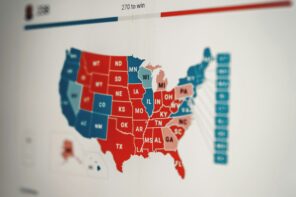I am holding a glass Coca-Cola bottle as I walk along an unkempt gravel street. The evening is cool, the air damp, and the roads are mostly empty. To my right, a row of restaurants and bars obscure ocean waves lapping against the shore. To my left, a group of beanie-clad teens—maybe two, three years younger than me—ride their bikes past, chuckling as they attempt jumps off a cardboard ramp. I clutch the hood of my raincoat as it begins to drizzle.
My dad rolls by in our family’s rental Honda. He urges me to climb inside. I’m enjoying my alone time, sure, but our AirBnB is located on top of a hill, and I’d rather be dry, so I duck into the passenger seat. Halfway up, my dad stops the car and tells me to take a turn driving. Stunned—he barely even lets me drive in the city!—I nod and we switch spots. Soon, I am steering through the winding streets of Woody Point, intermittent waves of worry and calm propelling me forward. The ocean ripples below me and my soda bottle swishes in the cup-holder. Ironically, while zigzagging roads in the now-pouring rain, I am overcome with a sense of near-total stillness.
Forget amusement parks; the Maritimes may very well be the most magical place on earth. I say that from personal experience. The summer before I started Grade 12, when university was just a foggy concept on the horizon, my parents organized a ten day family trip across Newfoundland. We began in the more charted territory of St. John’s and worked our way inland, eventually ending in the tiny west coast town where I had that rainy-night driving lesson. The vacation instilled in me a fresh appreciation for my country, and its effects lasted much longer than any postcard or Instagram story.
My trip to Newfoundland impacted me so much because it was the first time I confronted my Canadian identity in earnest.
I remember lighthouses and laundry lines, pitcher plants and puffinries. I shopped for quilts with my mom in a small town gift shop and kayaked with my sister in a vast fjord. I annoyed my family on a hiking trail by belting lyrics from the musical Come From Away for three hours straight—and no, I am not a talented singer. As for the food? Our diets were defined by fish-cakes, poutine, and partridgeberry pie. I tried everything. Whereas my health-conscious parents bemoaned that chefs in small town diners even put fried chicken in the Caesar salads, I revelled in the province’s greasy spoon glory.
There was a greater meaning to my Newfoundland adventure than just epic nature and diner poutine, though. Why else would I still recall the trip so warmly, two years out from climbing those oceanside cliffs?
I think my trip to Newfoundland impacted me so much because it was the first time I confronted my Canadian identity in earnest. Growing up as a child of South African immigrants and a religious minority, a host of other cultures and identities eclipsed any true sense of Canadian belonging. My Toronto home contains more boxes of kosher Mac and Cheese than Kraft Dinner. The shelves of my living room brim with biographies about Nelson Mandela, but no Alice Munro or Margaret Atwood. I never really saw myself as a Canadian, because I felt I couldn’t honestly call myself one when I was so many other things first
Growing up as a child of South African immigrants and a religious minority, a host of other cultures and identities eclipsed any true sense of Canadian belonging.
Yet in Newfoundland I discovered a different side to my country. I met people in small towns whose way of life opposed the jam-packed city hustle I grew up with. I particularly remember listening to a waitress on Fogo Island talk about a recent upscale inn that had gained notoriety in the community. While the inn was an architectural wonder and attracted the attention of celebrities, many islanders also saw the building as representing a stark divide between the rich and the working class.
Beyond this, I learnt about oft-ignored injustices in Canadian history. One night, we saw a local play about the provincial government’s resettlement of many port communities during the 1960s. The stage was set up to represent the graveyard of a fishing town, and the dead came to life to recount their forgotten lives through thick Newfoundland accents.
My visit to the Maritimes was the stuff of tourism brochures and coming of age movies. By experiencing first-hand a multitude of Canadian perspectives, the trip helped solidify a sense of belonging in my own country. I came to understand that there is no one, all-encompassing definition of being Canadian, and that possessing a diverse mix of identities—just like Newfoundland’s diverse landscapes and stories—is perhaps more Canadian than Kraft Dinner itself.
By experiencing first-hand a multitude of Canadian perspectives, the trip helped solidify a sense of belonging in my own country.
Travelling is a luxury, and often we have to be strategic about how we spend our slivers of vacation time. Still, I urge anyone with even an inkling of curiosity about our country to devote some time to visiting a new part of it. Not only is a trip within Canada more affordable than an extravagant overseas holiday, but it can really illuminate some unexpected corners of our own backyard. Maybe that means skiing in Whistler, camping in the Laurentians, or heading out east. Or, maybe you’re like me and you’re dying to experience the Calgary Stampede in summers to come.
Until then, I still have that rainy night in Woody Point, driving with my dad against a backdrop of wooden houses and roaring ocean waves. I remember the world pausing for a moment and hearing my heartbeat: I am here, I am a part of this place, and as I steer through an unfamiliar small town, I find a Canada to call my own.








